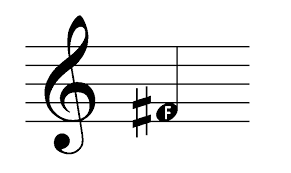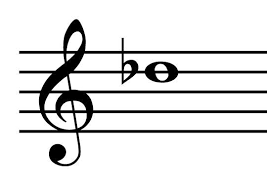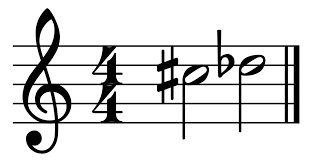Enharmonic Quiz: Trivia Questions!
(506).jpg)
.
Questions and Answers
- 1.
Which are enharmonic?
- A.
D# and D
- B.
D# and Eb
- C.
D# and F#
- D.
D# and B
Correct Answer
B. D# and EbExplanation
D# and Eb are enharmonic because they represent the same musical pitch but are written differently. In Western music notation, there are twelve different pitch classes, and enharmonic notes are two different names for the same pitch. In this case, D# and Eb are enharmonic because they both represent the same pitch that is a half step above D.Rate this question:
-
- 2.
Which are enharmonic?
- A.
Bb and A
- B.
Bb and G#
- C.
Bb and A#
- D.
Bb and E
Correct Answer
C. Bb and A#Explanation
Bb and A# are enharmonic because they represent the same pitch on a musical scale, but are written differently. In music theory, enharmonic notes are those that have different names but sound the same. Bb and A# are both a half step above A, so they have the same pitch but are notated differently.Rate this question:
-
- 3.
Which are enharmonic?
- A.
Ab and G#
- B.
Ab and B
- C.
Ab and F
- D.
Ab and E#
Correct Answer
A. Ab and G#Explanation
Ab and G# are enharmonic because they represent the same pitch on a piano keyboard, despite being spelled differently. In equal temperament tuning, each half step is divided into 12 equal parts, known as semitones. Since Ab and G# are a half step apart, they occupy the same position on the keyboard and produce the same sound. This is an example of enharmonic equivalence, where two different musical notations represent the same pitch.Rate this question:
-
- 4.
Which is the enharmonic?
- A.
G
- B.
Bb
- C.
Gb
- D.
Ab
Correct Answer
C. GbExplanation
Gb is the enharmonic equivalent of F#. In music theory, enharmonic means that two notes have the same pitch but are written differently. Gb and F# are enharmonic because they sound the same when played on an instrument, but they are written differently. In this case, Gb is the correct answer because it is the only option that is enharmonic to another note.Rate this question:
-
- 5.
Which are enharmonic?
- A.
Db
- B.
C
- C.
C#
- D.
F#
Correct Answer
C. C#Explanation
The notes C# and Db are enharmonic because they represent the same pitch on a piano keyboard but are written differently. In equal temperament tuning, which is the most common tuning system used today, every semitone is divided into 100 cents. The distance between C and C# is 100 cents, and the distance between C# and Db is also 100 cents. Therefore, C# and Db are enharmonic equivalents.Rate this question:
-
- 6.
What is enharmonic to F?
- A.
E#
- B.
E
- C.
F#
- D.
G
Correct Answer
A. E#Explanation
The note E# is enharmonic to F because they represent the same pitch on a musical scale. Enharmonic notes are different names for the same sound, and in this case, E# and F are played at the same frequency.Rate this question:
-
- 7.
What is enharmonic to B?
- A.
D
- B.
Cb
- C.
Db
- D.
None of the above
Correct Answer
B. CbExplanation
Cb is enharmonic to B. Enharmonic notes sound identical but are written differently. In music notation, Cb represents a semitone lower than B. Despite this distinction, they produce the same pitch when played. This phenomenon allows for alternative spellings of the same pitch, depending on the context and key signature of the musical piece.Rate this question:
-
- 8.
Which are enharmonic?
- A.
F and F#
- B.
D# and Eb
- C.
C# and D
- D.
B and C#
Correct Answer
B. D# and EbExplanation
D# and Eb are enharmonic because they represent the same pitch on a musical instrument, but are spelled differently. In music theory, enharmonic notes are different names for the same pitch. In this case, D# and Eb are the same pitch on a piano keyboard, but they are written differently. This is because the piano keyboard is divided into equal half steps, and the same pitch can be represented by different note names depending on the musical context.Rate this question:
-
- 9.
Which are enharmonic?
- A.
Ab and G
- B.
G and G
- C.
G and G#
- D.
None of the above
Correct Answer
D. None of the aboveExplanation
The given answer "None of the above" is correct because none of the given pairs of notes are enharmonic. Enharmonic notes are two different names for the same pitch, but in this case, all the pairs consist of different pitches. Ab and G are different notes, G and G are the same note, but written twice, and G and G# are also different notes. Therefore, none of the pairs are enharmonic.Rate this question:
-
- 10.
Are these two notes enharmonic?
- A.
YES
- B.
NO
- C.
ONLY AFTER 5pm
- D.
NEVER
Correct Answer
A. YESExplanation
Enharmonic notes are two different notes that sound the same but are written differently. In this case, since the question is asking if the two notes are enharmonic, and the answer is "YES", it implies that the two notes being referred to are written differently but produce the same sound.Rate this question:
-
Quiz Review Timeline +
Our quizzes are rigorously reviewed, monitored and continuously updated by our expert board to maintain accuracy, relevance, and timeliness.
-
Current Version
-
Apr 26, 2023Quiz Edited by
ProProfs Editorial Team -
Feb 23, 2017Quiz Created by
Doug Boughter
 Back to top
Back to top





